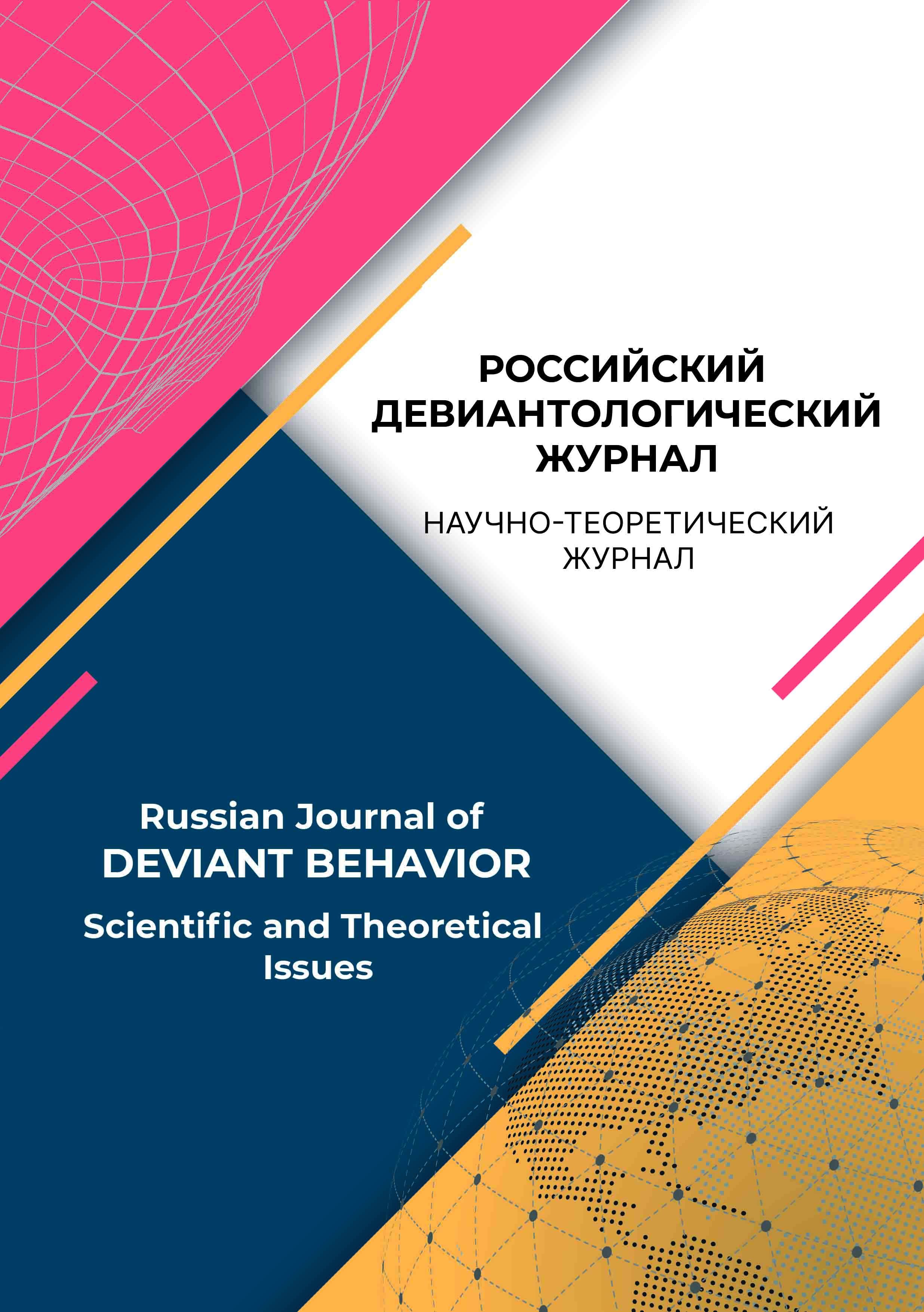Russian Federation
Russian Federation
UDC 316.6
UDC 616.89
Introduction. The article is devoted to the description and analysis of deviant behavior of young people in conditions of intensive development of information and communication technologies that facilitate and simplify the interaction of young people. The relevance is determined by the need to comprehend the importance of new socio-cultural factors in the formation of deviant behavior in order to improve the measures of its prevention and correction. The aim of the research is to characterise the role of the supervalue idea in the development of destructive forms of deviant behavior and to illustrate its manifestations in the contemporary socio-cultural context. Methodology and methods of the research. The methodological basis of the study is a combination of theories and concepts of deviant behavior that form the subject area of deviantology. General scientific methods used for generalisation and systematisation of information on deviant behavior, its forms and their manifestations are applied. The research material covers cases of deviant behavior of adolescents and young people. The result of the research is a description and characterisation of the contemporary socio-cultural context associated with changes in norms of behavior. The main reasons are identified as the current growing anomie, the consequences of the information and communication revolution and the subsequent generation gap. The authors emphasise the high level of basal anxiety, currently leading to emotional tension, which contributes to the formation of supervalues. Various forms and manifestations of these ideational and affective abnormalities are described, including the emergence of ideas with signs of extremism, and the rise of auto- and heterogression. Understanding the mechanisms of these tendencies is of theoretical and practical importance for the prevention of deviant behavior, as well as for counselling, psycho-corrective and psychotherapeutic work.
deviant behaviour, basal anxiety, supervalue idea, norms of behaviour, forms of aggression
1. Gilinskij, Ya. I. (2009). Sociologiya deviantnosti (novelly i perspektivy. Sociologicheskie issledovaniya, 8 (304), 70-73.
2. Dobryakov, I. V., Fesenko, Yu. A. (2022). Vlecheniya u detej i podrostkov: stanovlenie, proyavleniya, otkloneniya. Saint Petersburg: Prospekt Nauki.
3. Korolenko, C. P., Dmitrieva, N. V. (2012). Addiktologiya: nastol’naya kniga. Moskow: Obshcherossijskaya professional’naya psihoterapevticheskaya liga, Institut konsul’tirovaniya i sistemnyh reshenij.
4. Lichko, A. E. (2009). Psihopatii i akcentuacii haraktera u podrostkov. Saint Petersburg: Rech’.
5. Majsak, N. V. (2009). Diagnostika i korrekciya lichnostnyh osobennostej podrostkov s deviantnym povedeniem: monografiya. Astrahan’: Izdatel’skij dom «Astrahanskij universitet».
6. Mamardashvili, M. K. (2010). Ocherk sovremennoj evropejskoj filosofii. Lekcii 1978-79 gg. Moskow: Progress-Tradiciya; Fond Meraba Mamardashvili.
7. Mendelevich, V. D. (2007). Rukovodstvo po addiktologii. Saint Petersburg: Rech’.
8. Radaev, V. V. (2018). Millenialy na fone predshestvuyushchih pokolenij: empiricheskij analiz. Sociologicheskie issledovani¬ya, 3, 15-33. https://doi.org/10.7868/S0132162518030029
9. Rean, A. A. (2015). Faktory riska deviantnogo povedeniya: semejnyj kontekst. Nacional’nyj psihologicheskij zhurnal, 4(20), 105-110.
10. Rean, A. A., Adamchuk, D. V., Dozorceva, E. G., Enikolopov, S. N., Sobkin, V. S., Cvetkov, V. L., Cvetkova, L. A., Shipicyna, L. M., Shnejder, L. B. (2016). Psihologiya deviantnosti. Deti. Obshchestvo. Zakon: monografiya. Moskow: YUNITI-DANA.
11. Conzen, P. (2005). Fanatismus. Psychoanalyse eines unheimlichen Phänomens. Stuttgart: Kohlhammer.
12. Ericson, E. H. (1968). Identity: Youth and crises. New York: W. W. Norton & Company.
13. Harris, Th. E. (2004). I’m OK-You’re OK. HarperCollins.














